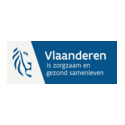In short
The surveillance network responsible for the detection of pollen and fungal spore levels in the air delivers crucial information for allergy patients and medical doctors. This information allows to correctly diagnose a pollen allergy, adapt treatment, take preventive measures during risk periods, but also to study and better understand certain aspects of our environment. The methodology that is used by our surveillance network is based upon the identification of the different pollen types by light microscopy.
Project description
The main aim of this project is to rapidly inform medical doctors and allergy patients about the presence of allergenic pollen an fungal spores in the outdoor air. These pollen and fungal spore levels in the air are used for the prevention and treatment of allergies. Indeed, this information allows doctors to correlate information about pollination and sporulation with the appearance of allergy symptoms in their patients. As such, the information given by our network can be of use for the diagnosis of a respiratory allergy. Furthermore, it allows patients to avoid as much as possible contact with the allergenic pollen or fungal spores to which they are allergic.
More about the surveillance network responsible for the detection of pollen and fungal spore levels in the air
The first measuring station in Belgium was installed in Brussels in 1982. Today, our network consist of 5 measuring stations, spread across the Belgian territory: in Brussels, De Haan, Genk, Marche-en-Famenne and Tournai. These measuring stations are operational every year between January and September for pollen grains and from January to November for fungal spores. The air sampling is done through a standardised volumetric method (type Hirst). To limit interference of the local surrounding vegetation, these measuring machines are placed on the rooftop of a building, between 10 and 15m of height. Air is aspired, 24 hours a day, with a flow of 10 liters of air per minute (which is approximately the flow of a human lung). The aspired air is then projected on a rotating device (the speed of the rotation corresponding to one complete turn a week). A wind direction vane ensures that the opening is always oriented towards the dominant wind direction. The surface of the rotating device is covered with a cellophane band with a vaseline layer, which allows particles from the air to adhere. The band is subsequently divided in pieces corresponding to 24 hours. Each piece is mounted to a microscope glass and the counting and identification of the pollen and fungal spores is done manually by analysing these microscope glasses at a magnification of 400X.
Communication of the results
The results of the analyses are spread through a variety of communication channels. During the pollen season, the website www.airallergy.be is updated on a daily basis. This is also the case for the mobile application AirAllergy which is available for Android and iOS.
During the risk period for patients suffering from hay fever, a daily risk index for allergy to grass pollen is spread through the website of the Royal Meteorological Institute (RMI). This index is a collaboration between the RMI and Sciensano, and is based upon the measured pollen concentrations on the one hand and the weather forecast on the other hand. Information about the evolution of the pollen and fungal spore season is also spread through our Twitter account @AirAllergy.
Furthermore, we answer numerous questions from the population as well as from the press. Several press releases are spread during the pollen season, for instance at the start of the season of the most important allergenic plants (Ash, Hazel, Birch and Grass).
Sciensano's project investigator(s):
Service(s) working on this project
Partners







